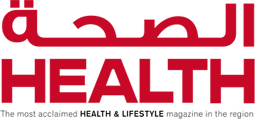 Defined
Defined
A silent heart attack, explains Specialist Cardiologist Dr.Sharada Sivaram, is a heart attack that actually happens without the person knowing. “In this situation, there are no obvious symptoms, such as pain in the chest, shortness of breath, and cold sweats, and in fact, 45 percent of all heart attack victims suffer what’s called a silent attack,” she says.
Misdiagnosis
According to Dr. Sharada, women have higher threshold for seeking medical help, and when they do, symptoms in women may be dismissed as anxiety or panic attack. “Also, women have higher occurrence of ‘broken heart’ syndrome and higher prevalence of microvascular coronary artery disease whereby coronary angiograms show no obstruction of blood flow,” she explains.
Signs
Some nonspecific symptoms include heart burn, indigestion, nausea, sudden prolonged tiredness, flu, cold sweats, jaw pain, muscle strain in chest or upper back.
The Danger
A silent heart attack, tells Dr.Sharada, is just as dangerous as its obvious counterpart. “The impact is more severe as the person may not seek medical help in time to restore blood supply,” she says and silent heart attacks increase the risk of dying from heart disease threefold, and increase the chance of dying from all causes by 34 percent. While men are more likely than women to have a silent attack, women are more likely to die from one. Heart disease, she adds, is the number one killer of women, taking more lives than all forms of cancer combined in developed countries. The good news is that if treated in time, with either clot busting drug or with a balloon angioplasty, the heart can be restored to its normal function completely. Treatment works best if given within one hour of when symptoms begin.
What to Do if It Happens
Dr. Sharada advises that people should not dismiss sudden fatigue, nausea, or shortness of breath that occurs when exercising or at rest and should seek medical help promptly. “Call 999/998 and do not drive a car themselves if possible,” she warns, and as every second counts, don’t delay- get help right away.
Lifestyle Modification
As the known risk factors such as high blood pressure, high blood sugar, high cholesterol, smoking and sedentary life style contribute to causing heart attack, Dr. Sharada points out that lifestyle modification is fundamental to help prevent this problem. “Eat healthy, stay active, be smoke-free, and relax from stress, all which can help lower the risk of heart disease,” she says. (Credit: Dr.Sharada Sivaram, Specialist Cardiologist at Thumbay Hospital)
Unusual Symptoms
According to Physician Dr.Faisal Hasan, some of the more unusual symptoms that we may not immediately associate with a heart attack include unexplained weakness, discomfort in the
throat, neck or jaw, and heartburn. “The fact is that since about 45 percent of heart attacks are ‘silent,’ patients do miss out on these important warning signs – be it these uncommon symptoms
or more traditional signs like chest discomfort, cold sweat and extreme weakness,” he says and for this reason, it is crucial that patients do not overlook any symptoms they experience, especially if they are new and unexplained.
Heart Checkups
Regular general health and heart screenings are important to help detect problems early, leading to a better chance of positive outcomes, points out Dr. Hasan. “These health checks typically assess blood pressure, cholesterol and sugar levels, weight, and other vital signs,” he explains and the recommended frequency and types of checkups vary depending on age, general health, family history, and lifestyle choices. Patients with a previous history of heart disease, stroke or heart attacks require more regular screenings than other patients; however, it is generally recommended that heart screenings begin at age 20. H (Credit: Dr. Faisal Hasan, Staff Physician, Heart and Vascular Institute, Cleveland Clinic, Abu Dhabi)
Tips to Help with Lifestyle Modification
1. Know your risk factors.
2. Eat healthy: Diet should be rich in fiber-eat plenty of fresh fruits and vegetables. Limiting salt in your diet can lower your blood pressure. Eating foods low in saturated fat helps prevent high blood cholesterol.
3. Stay active: Engage in moderate-intensity exercise for 2 hours and 30 minutes every week.
4. Do not Smoke.
5. Minimize alcohol.
6. Avoid anger and practice choosing happiness.
Six Sinister S’s
Avoid: Smoking/Sedentary
Life Style/Stress.
Minimize: Salt/Sugar/Saturated Fats
(Credit: Dr.Sharada Sivaram)
BROKEN HEART SYNDROME
(Takotsubo Cardiomyopathy)
Defined
According to the website secondscount.org, while broken heart syndrome happens in both men and women, it is most common in post-menopausal women. The syndrome is not a heart attack, but
it produces symptoms similar to one. It typically resolves without lasting damage, and is fatal only in rare cases.
Indications
A person experiencing broken heart syndrome may reach the hospital exhibiting the same symptoms as a heart attack, such as chest pain or shortness of breath. But, unlike a heart attack, no blockages will be found in the arteries that supply blood to the heart, and the main pumping chamber of the heart (the left ventricle) will have a unique and unusual shape.
Occasionally, broken heart syndrome can be linked to an emotional or physical cause; other times the cause is never known. Researchers believe it can be triggered by forms of stress as varied as a catastrophic medical diagnosis, an acute medical illness, the death of a relative, a serious car accident or a devastating financial loss.





































